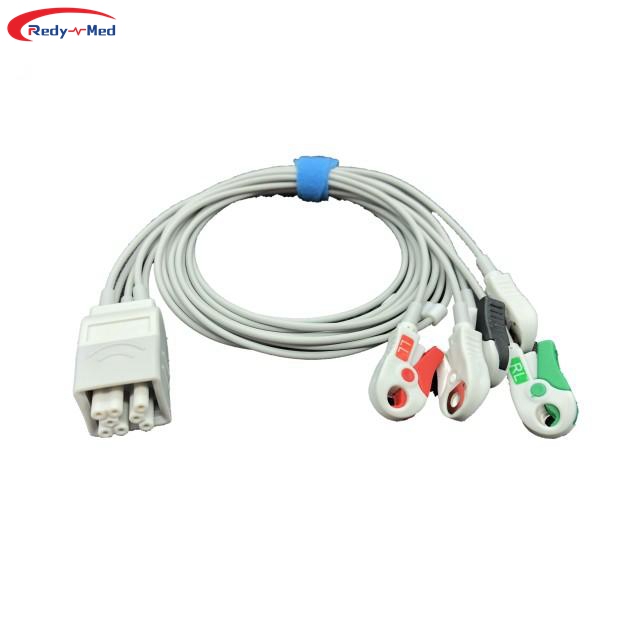
- Home > News > Industry News
Common faults and solutions of ECG cables
2023-08-03 19:01:50
Understanding and Troubleshooting ECG Cable Issues

Electrocardiogram (ECG) cables are integral components in accurate and reliable cardiac monitoring. However, they are prone to various faults that can affect the quality and integrity of the ECG signal. This article delves into common problems encountered with ECG cables and provides solutions to address these issues.
1. Cable Fraying or Damage
One of the most common issues with ECG cables is fraying or damage. Over time, the cables may get tangled, bent, or exposed to excess stress, leading to wear and tear. This can result in signal distortion, intermittent connections, or complete signal loss.
To overcome this problem, regular cable inspections should be conducted, focusing on identifying any signs of damage or fraying. If any damage is detected, the cable should be replaced immediately. Additionally, proper handling and storage practices, such as using cable sliders and avoiding sharp bending, can help prevent cable damage.
2. Poor Electrode Attachments
Incorrect or faulty electrode attachments can significantly impact the accuracy of ECG readings. Loose or detached electrodes can introduce artifacts, signal noise, and inconsistent signal quality.
To address this issue, it is crucial to ensure proper electrode placement and secure attachment. Regularly check and reposition electrodes as needed to maintain good skin contact. Additionally, using electrode adhesives or conductive gels can enhance the conductivity and reliability of the ECG signal.
3. EMI/RFI Interference
Electromagnetic interference (EMI) and radiofrequency interference (RFI) can adversely affect ECG signals, leading to distorted readings and unreliable data. Common sources of interference include mobile phones, electrical equipment, and strong magnetic fields.
To mitigate EMI/RFI interference, it is crucial to keep the ECG cables away from potential sources of interference. Proper grounding of the monitoring equipment and careful shielding of the cables can also minimize the impact of external electromagnetic fields. Additionally, using high-quality ECG cables with proper insulation can help reduce interference levels.
Conclusion:
Accurate ECG monitoring relies on the proper functioning of ECG cables. Understanding the common faults associated with these cables and implementing the appropriate solutions plays a vital role in ensuring reliable and accurate cardiac monitoring. Regular cable inspections, secure electrode attachments, and mitigating EMI/RFI interference are essential steps to address these issues and maintain the integrity of ECG signal transmission.
Get the latest price? We'll respond as soon as possible(within 12 hours)




